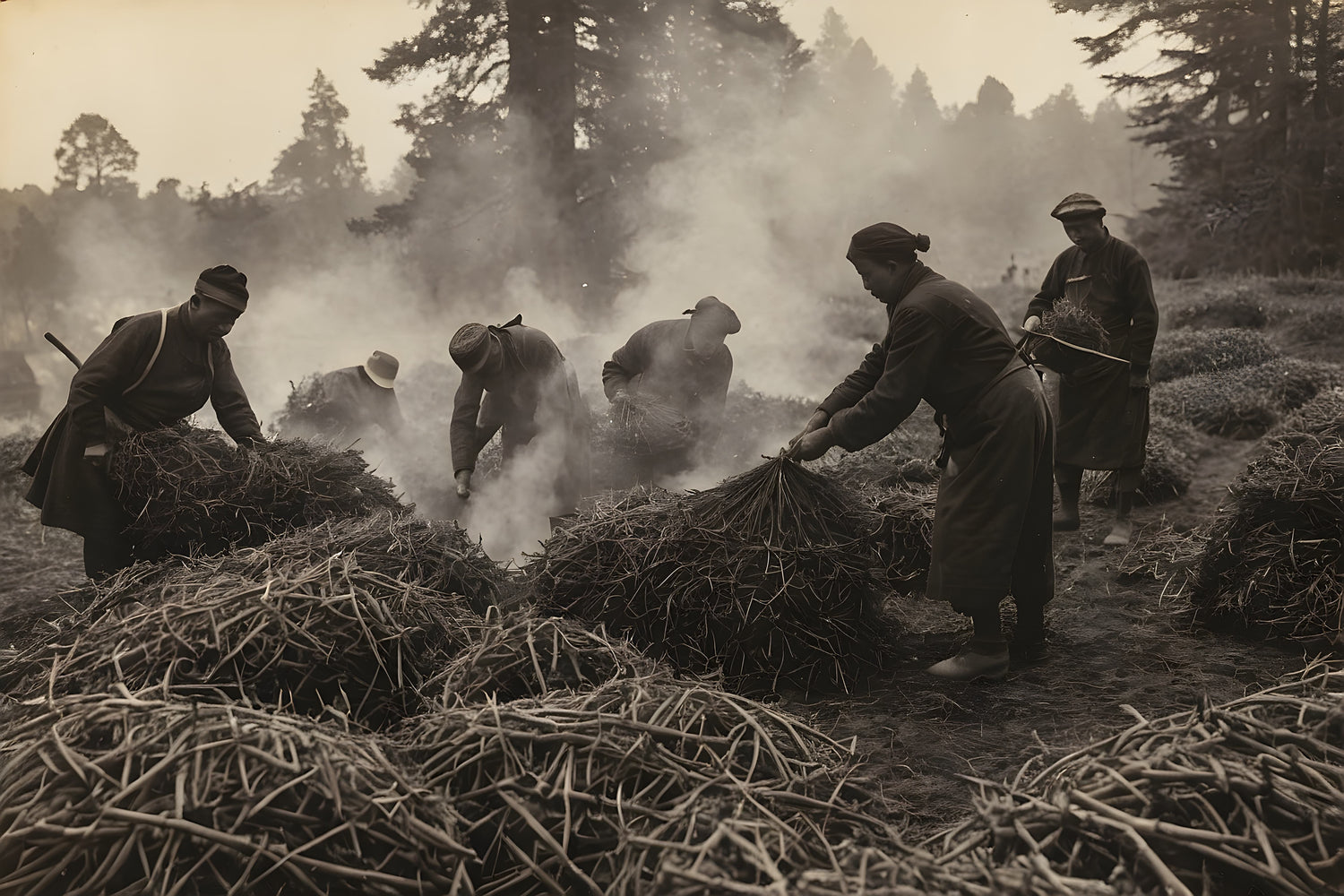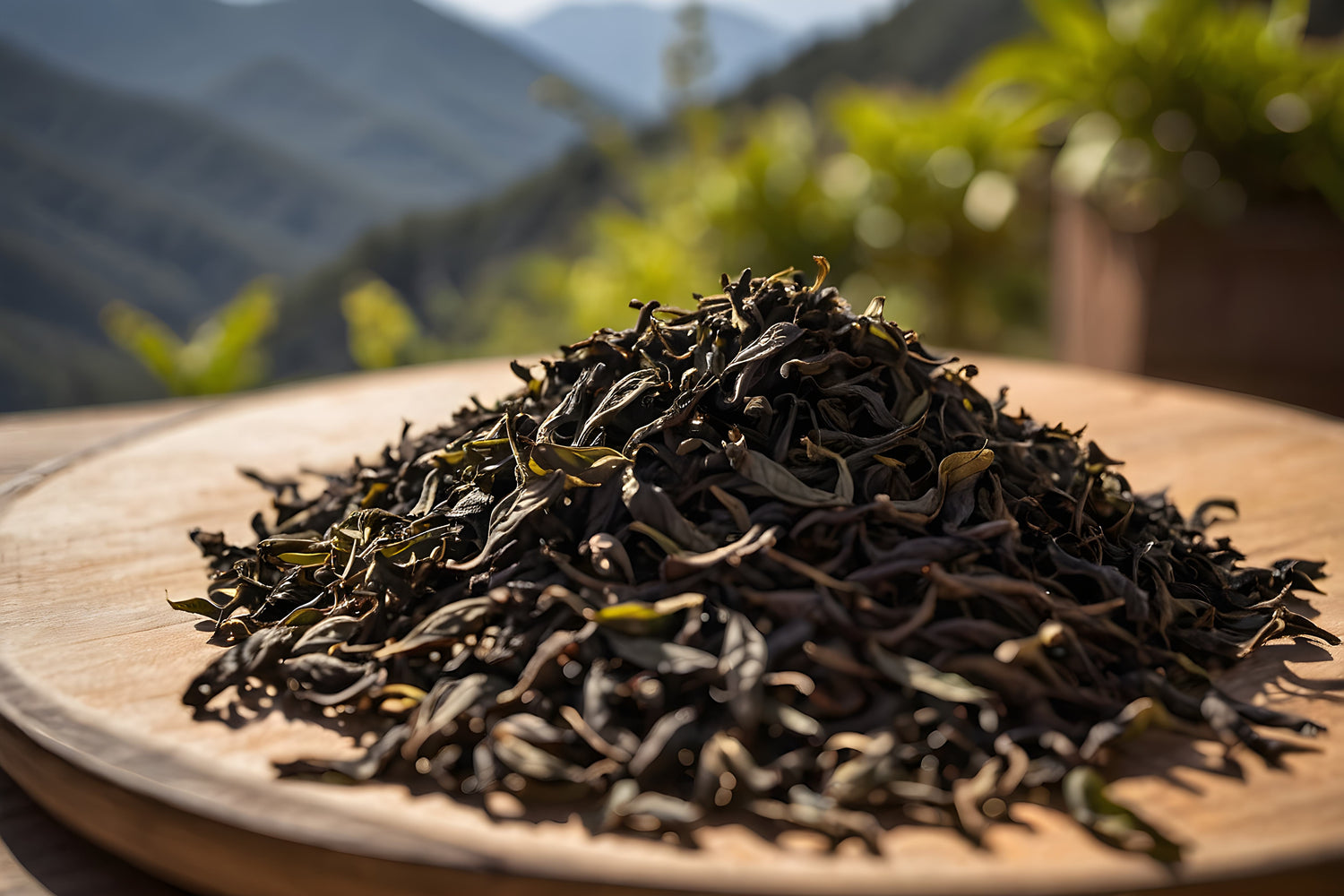Lapsang Souchong
Lapsang Souchong
Lapsang Souchong originates from the Tong Mu Village, the birthplace of black tea, and is famous for its strong, smokey character. Our Lapsang Souchong is produced with great attention to detail, ensuring the smoke note is balanced, clean and inviting.
|
Region 💬The region where tea is grown influences its flavor, aroma, and quality. Different climates, altitudes, and soil types contribute to unique characteristics specific to each area.
|
Tong Mu Village, Fujian, China |
|---|---|
|
Harvest 💬The season when the tea is harvested affects its flavor profile. Early spring teas, known as first flush, are often lighter and more delicate, while later harvests can be bolder and more robust.
|
Early spring 2024 |
|
Cultivar 💬Cultivar refers to the specific variety of tea plant used. Different cultivars have distinct flavor profiles, growth patterns, and adaptability to environmental conditions.
|
Camellia sinensis var. sinensis |
|
Pluck set 💬The pluck set describes the combination of leaves and buds that are harvested. For example, 'one bud and two leaves' is a common standard that can impact the tea's flavor, texture, and quality."
|
1 bud with 2 leaves |
|
Caffeine 💬Caffeine levels vary between tea types and can be influenced by factors like leaf size, processing methods, and steeping time.
|
Medium |
|
Roast 💬Roast level refers to how much heat has been applied to the leaves during processing. A higher roast imparts deeper, toasty notes, while lighter roasts preserve the tea’s natural floral or vegetal character.
|
Light |
|
Oxidation 💬Oxidation is the process of exposing tea leaves to air, which changes their color and flavor. Higher oxidation levels result in darker, more robust teas, while lower levels maintain lighter, more delicate flavors.
|
100% |
|
Fermentation 💬Fermentation is a microbial process used in certain teas like Pu'er to develop complex flavors over time. Higher fermentation levels often produce richer, earthier notes and darker liquor.
|
N/A |
Grade info: We offer 3 different grades of tea: ZL Everyday (premium), ZL Select (ultra premium), and ZL Artisan (luxury).
Learn more about how we grade our teas.
Suggested water temperature
 |
90-95°C (194-203°F) |
OR | Allow kettle to cool for 2 minutes before pouring |
Simple brewing method
 |
+ |  |
+ |  |
+ |  |
| 2g (1 tsp) |
tea infuser | 240ml (1 cup) |
4-5 mins |
2 oz | 56.7 g (28 cups)
4 oz | 113.4 g (56 cups)
8 oz | 226.8 g (112 cups)
1.41 oz | 40 g (20 cups)
Couldn't load pickup availability
Share





Taste & Aroma
Lapsang Souchong (Zheng Shan Xiao Zhong—正山小种) has a rich, smoky aroma, layered with notes of pine resin, dried longan, and dark caramel. Carefully smoked over pinewood, it brews a bold yet smooth infusion with a lingering, warming finish.

Terroir
High in Tong Mu’s misty forests, Lapsang Souchong develops a rare harmony of dried longan sweetness and osmanthus florals, shaped by the cool flow of pristine mountain springs.

History
Born in Tong Mu during the late Ming Dynasty, Lapsang Souchong's smoky flavor was a happy accident, created when pinewood fires saved a delayed tea harvest—a tradition that gained fame in royal courts across Europe.

Production
Crafted with centuries of expertise, Lapsang Souchong's smoky variety is dried over native Masson Pine for its signature flavor, a process that involves withering the leaves over open fires, pan-firing to halt oxidation, and carefully smoking them in bamboo baskets. This meticulous method infuses the tea with layers of pine smoke while preserving its natural sweetness.

Geography
Hidden in the Wuyi Mountains, Tong Mu is the birthplace of black tea and home to other iconic teas like Jin Jun Mei (金骏眉) and Silver Jun Mei (银骏眉), crafted sustainably within its protected, biodiverse forests.




